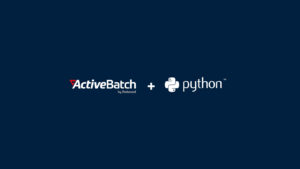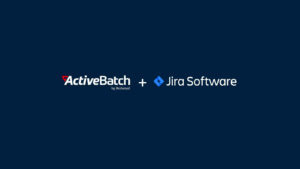How to Simplify Processes in Education with Workflow Automation Solutions
Learn more about how workflow automation offers a transformative solution that streamlines operations and improves productivity for education.

Automation isn’t the future; it’s the here and now. Bill Gates calls this new age the Age of AI. And in this age of digital transformation, universities should prepare students for the future of automated work.
Gone are the days of cumbersome paperwork, manual administrative tasks, and siloed departments. Workflow automation offers a transformative solution that streamlines operations, improves productivity, and frees up valuable time for educators and staff to focus on what truly matters – nurturing students’ intellectual growth and fostering a dynamic learning environment.
This article delves into the world of education workflow automation, exploring its importance, benefits, and countless possibilities it brings to higher education institutions. From admissions and financial aid to student affairs and human resources, we uncover how automation technology reshapes the education landscape, enabling administrators to enhance the student experience, reduce costs, and embrace a future-ready approach.
Why is education workflow automation important for students and educators?
Ernst & Young found that automated workflows reduced an educator’s workload by up to 13 weekly hours. Also, collegiate faculty already spend 30% of their time on paperwork and administrative tasks.
Here are key reasons why workflow automation is crucial for students and educators:
For Students:
- Students today are accustomed to seamless digital experiences in various aspects of their lives. Workflow automation brings the same level of convenience to education, simplifying processes such as registration, document submission, and accessing campus services. This saves time and reduces frustration, allowing students to focus more on their studies and personal growth.
- Manual paperwork and administrative tasks can be time-consuming and error-prone. Automation eliminates these inefficiencies by digitizing and automating processes, ensuring accuracy, consistency, and faster turnaround times. This means streamlined admissions, financial aid, course registration, and record management workflows, resulting in a smoother educational journey.
- Workflow automation enables educational institutions to personalize the student experience. Institutions can tailor communication, services, and support to individual students by capturing data and preferences. This personalized approach fosters stronger engagement, promotes student success, and enhances overall satisfaction.
For Educators:
- Educators often find themselves burdened with administrative tasks, leaving less time for teaching, mentoring, and curriculum development. Workflow automation reduces the time spent on manual processes, paperwork, and repetitive tasks, allowing educators to focus more on delivering quality education and supporting student growth.
- Automating administrative processes eliminates human errors and reduces bottlenecks in workflows. This improved efficiency leads to faster response times, quicker decision-making, and streamlined collaboration among different departments. Educators can access relevant information, track student progress, and communicate with stakeholders more effectively, optimizing their work processes.
- Workflow automation optimizes resource allocation within educational institutions. By automating scheduling, record-keeping, and data analysis tasks, institutions can utilize their resources more efficiently, ensuring that faculty, staff, and facilities are utilized to their maximum potential. This results in cost savings and a more sustainable educational environment.
Beyond the immediate benefits, education workflow automation also prepares students for the digital age and the evolving job market. Proficiency in navigating automated systems and utilizing technology becomes a valuable skillset that can enhance students’ employability.
How can automated workflows help university administrators?
Just like students and educators, administrative staff have routine tasks too that can be freed with automation software.
Workflow automation software can benefit numerous departments in a college or university setting. Here is a list of departments that can leverage workflow automation software to streamline their processes and enhance efficiency:
- Admissions: Automating admissions processes such as application review, applicant communication, and document management can help with enrollment and improve the overall applicant experience.
- Financial Aid: Workflow automation can assist in managing financial aid applications, processing student loan requests, and ensuring compliance with regulatory requirements.
- Registration and Student Records: Automating course registration, add/drop processes, transcript requests, and degree audits can simplify administrative tasks and enhance accuracy.
- Academic Affairs: Workflow automation can support tasks related to curriculum management, faculty evaluations, course scheduling, and academic program reviews.
- Student Affairs: Departments like student counseling, career services, student organizations, and student activities can benefit from automated workflows for appointment scheduling, event management, and student support services.
- Student Accounts: Workflow automation can streamline tuition payment processing, billing, and managing student financial accounts.
- Information Technology & Security: Automating IT processes like user account management, help desk ticketing, software deployments, and system backups can improve efficiency and ensure data security.
- Facilities Management: Workflow automation can aid in managing maintenance requests, room reservations, equipment tracking, and facility inspections.
- Finance & Accounting: Automating financial processes such as accounts payable, budgeting, expense approvals, and invoice management can increase accuracy and reduce manual effort.
- Human Resources: Workflow automation can streamline employee onboarding, leave requests, performance evaluations, training management, and other HR processes.
These are just a few examples, and the applicability of workflow automation software can vary depending on the specific needs and structure of the college or university. Automated workflows won’t remove administrative jobs but free them up for more important tasks.
Case Studies of How Educators, Students, and Schools Use Workflow Automation Solutions
Those in education waste around 10 hours per week writing burdensome emails and conducting other administrative work.
Here are some examples of how they can use automation in the workplace:
Improve New Student Onboarding
Higher Ed can enhance the new student onboarding process with automation, ensuring an experience for incoming students.
For example, colleges can implement automated online student applications that allow prospective students to apply for admission easily. These forms can be integrated with backend systems to automatically capture and validate applicant data, eliminating the need for manual data entry and reducing the chances of errors.
Workflow automation also facilitates document collection and verification. Colleges can set up automated workflows that prompt students to submit necessary documents, such as transcripts or identification proofs, through a secure online portal. The system can then automatically verify the documents, ensuring compliance and reducing the burden on staff members who would typically handle these tasks manually.
Hasten Financial Aid Processing
One of the primary areas where workflow automation is beneficial is in the initial application and documentation collection stage.
With automated workflows, colleges can create online portals or forms where students can submit their financial aid applications electronically. These applications can be automatically captured, validated, and sorted based on predefined criteria.
For example, the system can check for completeness, verify required documents, and flag any missing information. This reduces the need for manual data entry and paper-based processes, ensuring a faster and more accurate application review process.
Automated workflows also assist in the evaluation and determination of aid eligibility. Once the applications are received and validated, the system can automatically route them to the appropriate staff members for review and assessment.
If certain criteria need to be met, such as income thresholds or academic performance, the workflow can perform automated checks and calculations to determine the student’s eligibility for various types of aid.
Improve IT Service Management
Workflow automation is crucial in streamlining IT service management processes, improving efficiency, and ensuring prompt resolution of technical issues.
A common use case for workflow automation in IT service management is help desk ticketing. When a user submits a support request, an automated workflow can be triggered to assign the ticket to the appropriate IT personnel based on the nature of the issue. The workflow can then track the ticket’s status, route it to different support tiers if needed, and escalate it for timely resolution.
Colleges often have a large IT equipment inventory, such as laptops, projectors, and audiovisual devices, that must be provisioned to students, faculty, and staff. Workflow automation can streamline this process by automating equipment requests, approvals, and tracking.
For example, when a user submits a request for a specific piece of equipment, an automated workflow can handle the approval process, check availability, generate work orders for equipment setup, and update inventory records.
Make Course Registration Easier
Colleges provide online platforms where students can access course catalogs, check availability, and register for classes. These portals are integrated with automated workflows that handle real-time prerequisites and course availability checks.
For example, when a student selects a course, the workflow automatically verifies if the student meets the necessary prerequisites and if open seats are available. This automation eliminates manual checks and allows students to register smoothly and quickly.
Another example of workflow automation in course registration is the management of waitlists and permission requests. When a course is full, students can join a waitlist and be automatically notified if a seat becomes available. The automation workflow keeps track of waitlisted students and manages the process of offering seats based on priority or a first-come, first-served basis.
Similarly, if a student requires special permission to enroll in a particular course, automated workflows can handle the request and notify the appropriate faculty or department for approval, streamlining the permission-granting process.
Education + Workflow Automation: Where Learning and Efficiency Meet
In an era where efficiency, productivity, and student satisfaction are paramount, education workflow automation emerges as a game-changer for colleges and universities.
ActiveBatch, a leading workflow automation software, offers a comprehensive solution that empowers educational institutions. With features like seamless integration with Student Information Systems, self-service portal automation, workflow orchestration, notifications and communication, and robust data reporting, ActiveBatch enables colleges and universities to streamline critical processes, including course registration, admissions, financial aid, and more.
By adopting automation strategies, universities can unlock significant benefits such as increased efficiency, enhanced productivity, and improved student experiences. Is your university prepared to embark on this transformative journey?
Frequently Asked Questions
Workflow process automation brings about a multitude of benefits, such as heightened efficiency, boosted productivity, minimized errors, and strengthened collaboration for various business processes. Automating repetitive tasks enables organizations to save time and resources, empowering employees to concentrate on more strategic and meaningful work.
Also, automation guarantees consistency and standardization in processes, resulting in higher-quality outputs and enhanced customer satisfaction.
Transform your education workflow with the power of cloud-based automation.
With education workflow automation tools, you can utilize form builders that offer drag-and-drop functionality and pre-designed templates, making it easy to create customized forms without the need for technical expertise or coding.
Discover the transformative capabilities of on-premise workflow automation – explore more about ActiveBatch.
Yes, workflow automation platforms often offer integration capabilities with popular CRM systems used in education. This integration enables seamless data flow between the workflow automation software and the CRM, allowing for automated updates, notifications, and task assignments based on CRM data. This enhances efficiency, data accuracy, and enables personalized communication with students and prospects.
Read more about the importance of continuous education in the IT industry and how it can enhance your skills.
No, a no-code workflow automation platform does not require any technical skills or coding knowledge. The platform provides a user-friendly interface where workflows can be created using pre-built actions, conditions, and logic. This empowers non-technical users to design and customize workflows according to their specific needs, saving time and resources while ensuring process efficiency.
Gain insights into overcoming the IT skills gap and optimizing your staffing strategy.







